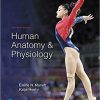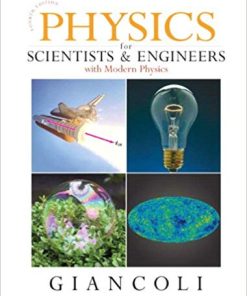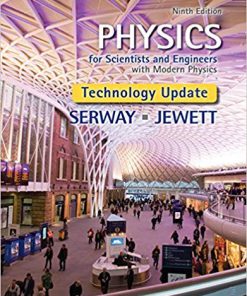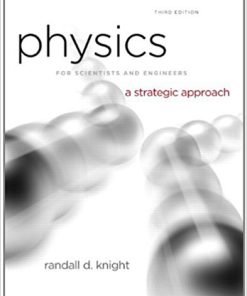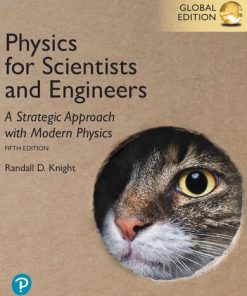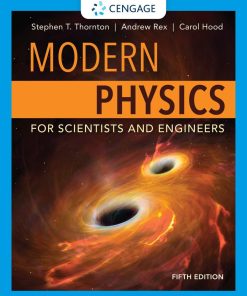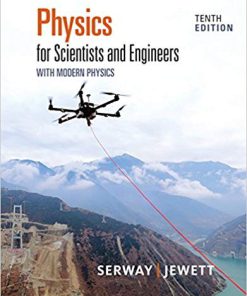(eBook PDF) Modern Physics for Scientists and Engineers 5th Edition
$50.00 Original price was: $50.00.$35.00Current price is: $35.00.
(eBook PDF) Modern Physics for Scientists and Engineers 5th Edition – Instant Download
(eBook PDF) Modern Physics for Scientists and Engineers 5th Edition – Digital Ebook – Instant Delivery Download

product details:
- ISBN-10 : 1337919454
- ISBN-13 : 978-1337919456
- Author: Stephen T. Thornton, Andrew Rex, Carol E. Hood
Learn how your life connects to the latest discoveries in physics with MODERN PHYSICS FOR SCIENTISTS AND ENGINEERS. This updated fifth edition offers a contemporary, comprehensive approach with a strong emphasis on applications to help you see how concepts in the book relate to the real world. Discussions on the experiments that led to key discoveries illustrate the process behind scientific advances and give you a historical perspective. Included is a thorough treatment of special relativity, an introduction to general relativity, and a solid foundation in quantum theory to help you succeed. An updated WebAssign course features a mobile-friendly ebook and a variety of assignable questions to enhance your learning experience. WebAssign for MODERN PHYSICS FOR SCIENTISTS AND ENGINEERS helps you prepare for class with confidence. Its online learning platform helps you unlearn common misconceptions, practice and absorb what you learn and begin your path as a future physicist or engineer. Tutorials walk you through concepts when you’re stuck, and instant feedback and grading let you know where you stand–so you can focus your study time and perform better on in-class assignments and prepare for exams. Study smarter with WebAssign!
table of contents:
1. THE BIRTH OF MODERN PHYSICS.
Classical Physics of the 1890s. The Kinetic Theory of Gases. Waves and Particles. Conservation Laws and Fundamental Forces. The Atomic Theory of Matter. Unresolved Questions of 1895 and New Horizons. Summary.
2. SPECIAL THEORY OF RELATIVITY.
The Apparent Need for Ether. The Michelson-Morley Experiment. Einstein’s Postulates. The Lorentz Transformation. Time Dilation and Length Contraction. Addition of Velocities. Experimental Verification. Twin Paradox. Spacetime. Doppler Effect. Special Topic: Applications of the Doppler Effect. Relativistic Momentum. Relativistic Energy. Computations in Modern Physics. Electromagnetism and Relativity. Summary.
3. THE EXPERIMENTAL BASIS OF QUANTUM PHYSICS.
Discovery of the X-Ray and the Electron. Determination of Electron Charge. Line Spectra.
Special Topic: The Discovery of Helium. Quantization. Blackbody Radiation. Photoelectric Effect. X-Ray Production. Compton Effect. Pair Production and Annihilation. Summary.
4. STRUCTURE OF THE ATOM.
The Atomic Models of Thomson and Rutherford. Rutherford Scattering. Special Topic: Lord Rutherford of Nelson. The Classical Atomic Model. The Bohr Model of the Hydrogen Atom.
Successes and Failures of the Bohr Model. Characteristic X-Ray Spectra and Atomic Number. Atomic Excitation by Electrons. Summary.
5. WAVE PROPERTIES OF MATTER AND QUANTUM MECHANICS I.
X-Ray Scattering. De Broglie Waves. Special Topic: Cavendish Laboratory. Electron Scattering.
Wave Motion. Waves or Particles? Uncertainty Principle. Probability, Wave Functions, and the Copenhagen Interpretation. Particle in a Box. Summary.
6. QUANTUM MECHANICS II.
The Schrödinger Wave Equation. Expectation Values. Infinite Square-Well Potential. Finite Square-Well Potential. Three-Dimensional Infinite-Potential Well. Simple Harmonic Oscillator.
Barriers and Tunneling. Special Topic: Scanning Probe Microscopes. Summary.
7. THE HYDROGEN ATOM.
Application of the Schrödinger Equation to the Hydrogen Atom. Solution of the Schrödinger Equation for Hydrogen. Quantum Numbers. Magnetic Effects on Atomic Spectra–The Normal Zeeman Effect. Intrinsic Spin. Special Topic: Hydrogen and the 21-cm Line Transition. Energy Levels and Electron Probabilities. Summary.
8. ATOMIC PHYSICS.
Atomic Structure and the Periodic Table. Special Topic: Rydberg Atoms. Total Angular Momentum. Anomalous Zeeman Effect. Summary.
9. STATISTICAL PHYSICS.
Historical Overview. Maxwell Velocity Distribution. Equipartition Theorem. Maxwell Speed
Special Topic: Superfluid 3^He. Summary.
10. MOLECULES AND SOLIDS.
Molecular Bonding and Spectra. Stimulated Emission and Lasers. Structural Properties of Solids. Thermal and Magnetic Properties of Solids. Superconductivity. Special Topic: Low-Temperature Methods. Applications of Superconductivity. Summary.
11. SEMICONDUCTOR THEORY AND DEVICES.
Band Theory of Solids. Semiconductor Theory. Special Topic: The Quantum Hall Effect. Semiconductor Devices. Nanotechnology. Summary.
12. THE ATOMIC NUCLEUS.
Discovery of the Neutron. Nuclear Properties. The Deuteron. Nuclear Forces. Nuclear Stability. Radioactive Decay. Alpha, Beta, and Gamma Decay. Special Topic: Neutrino Detection. Radioactive Nuclides. Special Topic: The Formation and Age of the Earth. Summary.
13. NUCLEAR INTERACTIONS AND APPLICATIONS.
Nuclear Reactions. Reaction Kinematics. Reaction Mechanisms. Fission. Fission Reactors.
Fusion. Special Applications. Special Topic: The Search for New Elements. Summary.
14. PARTICLE PHYSICS.
Early Discoveries. The Fundamental Interactions. Classification of Particles. Conservation Laws and Symmetries. Quarks. The Families of Matter. Beyond the Standard Model. Accelerators. Special Topic: Experimental Ingenuity. Summary.
15. MODERN ASTROPHYSICS AND GENERAL RELATIVITY.
Stellar Evolution. Special Topic: Computers. Special Topic: Are Other Earths Out There? Galaxies and the Discovery of Dark Matter. Tenets of General Relativity. Tests of General Relativity. Black Holes. Gravitational Waves. Summary.
16. COSMOLOGY–THE BEGINNING AND THE END.
Evidence of the Big Bang. Special Topic: Measuring the Hubble Constant. The Theory of the Big Bang. Problems with the Big Bang. The Age of the Universe. The Standard Model of Cosmology. The Future. Summary.
people also search:
physics for scientists and engineers with modern physics by giancoli
famous engineering scientists
famous earth science scientists
physics for scientists and engineers with modern physics solution chegg
You may also like…
Education Studies & Teaching - School Education & Teaching
Physics for Scientists and Engineers with Modern Physics 4th Edition Douglas C. Giancoli – eBook PDF
Mathematics
(eBook PDF) Physics for Scientists and Engineers with Modern Physics, Technology Update 9th Edition
Social Science
(eBook PDF) Physics For Scientists And Engineers: A Strategic Approach With Modern Physics 3th
Physics - Theoretical Physics
Physics - General Courses
Modern Physics for Scientists and Engineers 5th Edition Stephen Thornton & Andrew Rex – eBook PDF

